With all the accolades the Mustang has achieved, it has had to overcome one key flaw in its fifty-year
history: weight. Weight has been a crucial factor and inhibtor to allow Mustang owners to achieve
perfect
weight distribution from front to rear. Unfortunately, the Mustang has gained a lot of weight over the
years due to regulations for safety and added creature comforts. These can inhibit a balance of form and
function for enthusiasts to have the best performance Mustang possible. While reducing weight out of your Mustang is essential, it is just as important to have supporting
components such as rotors, wheels, and body panels that are as light as possible to enhance the power to
weight ratio. Contrasting this is the ability to offset the weight loss by ensuring your Mustang has
proper chassis rigidity. Combined, these will provide a mix of performance to benefit your Mustang in
all key areas and characteristics. Weight is always the enemy of performance at every level, even if
you're the
type of enthusiast who uses their pony for a weekend cruise or canyon carving session. For those of us who track our Mustangs, we know that weight is not our ally. At Steeda, we know that
weight is the enemy of performance, and for that reason, we make our cars lightweight where we can.
These upgrades can dramatically change the handling and performance of these cars, especially when
paired with each other. With lightweight panels, wheels, and other parts, you can cut large amounts of
weight and ultimately can shave time off your runs regardless of the type of racing you compete in.
Weight Reduction
Chassis Rigidity
Within the past fifteen years, the Mustang has gained significant weight due to federal
automobile regulations, safety restrictions, and creature comfort items. Now that is necessary and
justifiable in the modern era. Enthusiasts are always on the lookout to improve their pony no matter
what they have to
do. Take the S550 Mustang, which debuted back in 2015; it stunned the world on how forward-thinking Ford
went
to bring the Mustang to the 21st century. Its groundbreaking independent rear suspension, retro fastback profile, long hood, and broad rear
haunches changed how a Mustang can be for the modern era. It revolutionized the way the Mustang
community thinks and develops performance parts for the world of muscle cars. With all the revolutionary
progression in
technology, handling, and performance integrated into the new stallion, it still falls short in the
weight class. Where Steeda comes into play, is helping Mustang enthusiasts have an abudance of choices
to counteract unnecessary weight your Mustang holds but without sacrificing form and functionality. When you look at weight reduction in your Mustang, you need to understand a few things before we point
out before a list of parts that can be removed and replaced with weight reduction parts. There are two
classifications of weight reduction: When looking at static elements, most often than not, an enthusiast starts with the back seat installing
a rear seat delete. Most people don't know that a rear seat in your Mustang accounts for over 30
pounds of weight depending on materials. By installing a rear seat delete, you will decrease static
weight, which will free up the horsepower to make your Mustang quicker. Furthermore, you can add a
plentiful amount of carbon fiber to such areas, including your Mustang fenders, hood, trunk, and doors
to further free up even more static weight. Another example of static weight elements is one that car enthusiasts know well. Modifying an exhaust
can improve
performance alongside increasing
exhaust
volume. The factory exhaust
system is not designed generally to maximize performance and in return sound quality, but the
factory exhaust also limits cars in other ways too. The factory exhaust on a car like the Mustang or
F-150 weighs quite a lot and puts a damper on performance as a result. These exhaust systems limit
performance both through their weight and through limiting the actual backpressure from these pipes
from the engine, hindering performance figures as you build or modify your car. While on the other hand, active weight can be reduced by drilled and
slotted rotors, carbon
fiber
driveshaft, and half-shafts.
While there are many reasons why people will upgrade their wheels, the weight benefits make a
difference in every type of driving. When switching to a lightweight wheel and better tires, a
driver receives
benefits of lower rotational mass and lower weight while also in many cases having more durable
wheels. There are three types of wheels: cast, flow-formed, and forged, all of which have different
benefits and consequences. However, if you are looking to move towards lightweight wheels,
flow-formed and forged options are the better way to go since cast wheels are generally heavier.
Flow-formed wheels such as the Steeda Tridents
and
forged wheels are great options to go with when
building a lightweight car. As explained above, weight reduction is a crucial tool to ensure the best weight distribution from front
to rear and power to weight ratio. To compensate weight reduction, chassis rigidity is necessary. Now
you
may be wondering what chassis rigidity is? Chassis rigidity refers to stiffening the chassis even
further than the OEM intended, preventing flexing in critical areas such as the strut towers, floor pan,
trunk pan, and the overall frame of your Mustang. It
will help your Mustang handle more horsepower, harder launches, cornering, and vehicle
flexing. How to counteract these issues is quite simple, thanks to extensive engineering and design, companies
like
Watson Racing and Steeda have come up with ingenious components to aid
your Mustang to counteract
chassis flexing. To start, one of the biggest things any enthusiast can do is add a roll cage. One of
the most popular cages enthusiasts will add to their Mustang is a four-point half-cage. The benefits of
adding a four-point cage are the ability to kill two birds with one stone in terms of safety and chassis
stiffness. Simultaneously, adding that most racing sanctioning bodies will require a roll bar or roll
cage
to participate in the even tor racing series, mainly for safety. Furthermore, while adding a welded or bolt-in roll cage does wonders for safety and chassis stiffness. It
adds other parts such as a strut-tower brace,
subframe connectors, IRS subframe
support braces, and
adding a light weight bumper
bar that will add strength and reduce weight
at the same time. All of these combined will give your Mustang the proper balance of weight reduction
while adding strength to the chassis. In the end, you will have the extreme confidence your pony will
accept any challenge thrown
its way. As every enthusiast knows, the chassis is the bedrock to any Mustang; without it, it will not
perform to the legacy in which it was meant to be! Image Credit: Ford Motor Comapny, Ford Performance, Baer Brakes,
Watson RacingGuide: Mustang Weight Reduction & Chassis Rigidity
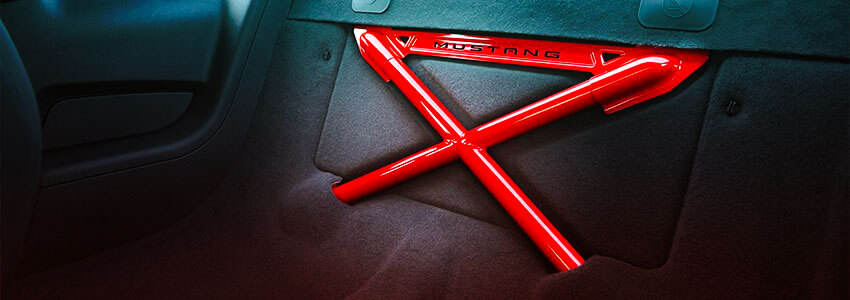
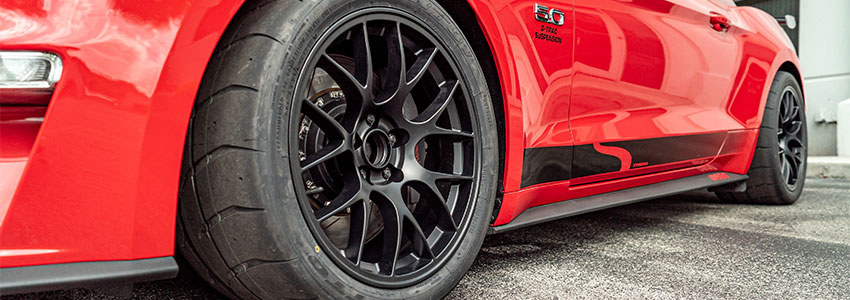
Keys To Weight Reduction
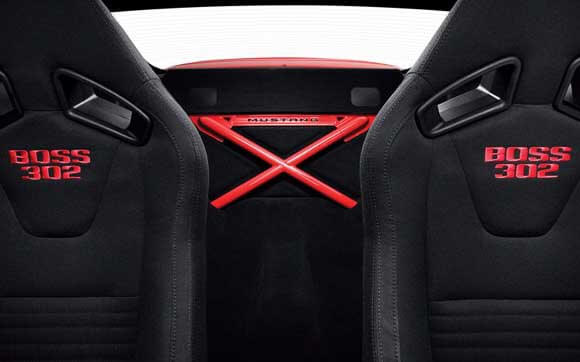
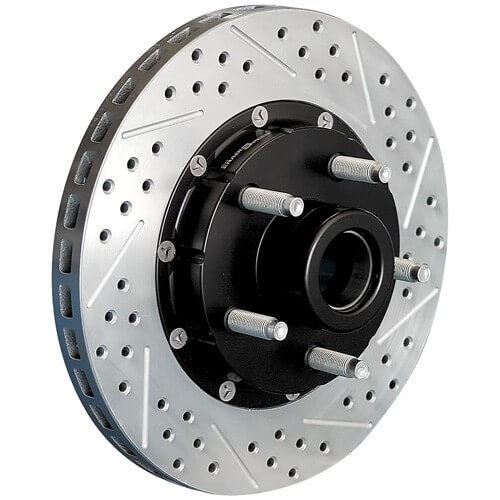
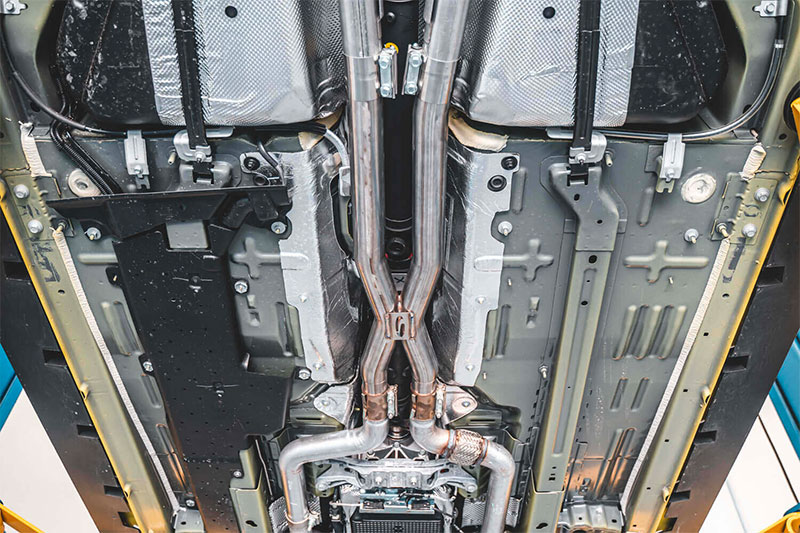
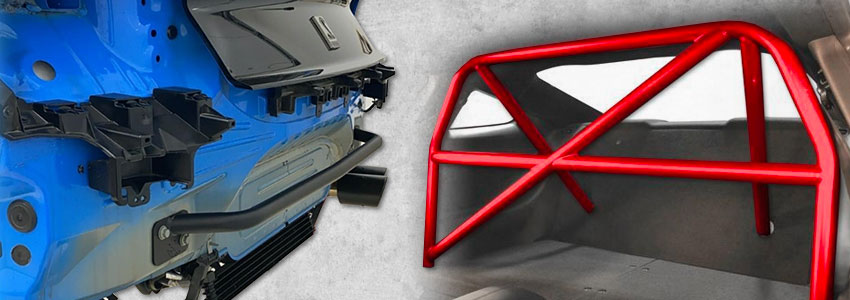
Chassis Rigidity
Related Articles





